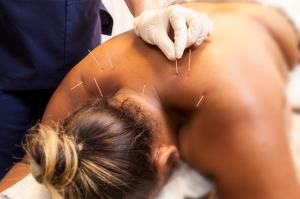Lateral epicondylitis, commonly known as tennis elbow, is a painful condition that affects the tendons in the elbow. It is often caused by repetitive motions, such as gripping a racket or repetitive computer mouse use. One effective treatment option gaining popularity is dry needling. In this article, we will explore what lateral epicondylitis is, how dry needling works, and how it can help alleviate pain and promote healing.
Understanding Lateral Epicondylitis
Lateral epicondylitis is characterized by inflammation of the tendons that connect the forearm muscles to the outer part of the elbow. Despite its name, tennis elbow can affect anyone who engages in repetitive arm movements. Symptoms include pain, tenderness, and difficulty gripping or lifting objects. The condition can significantly impact daily activities and performance in sports or work-related tasks.
What is Dry Needling?
Dry needling is a therapeutic technique that involves inserting thin needles into specific trigger points or tight bands of muscle. The goal is to stimulate the body’s natural healing response, reduce pain, and restore normal muscle function. Unlike acupuncture, which is rooted in traditional Chinese medicine, dry needling is based on Western medical principles and focuses on muscular and myofascial pain.
Dry Needling for Lateral Epicondylitis
Dry needling has shown promising results in the treatment of lateral epicondylitis. By targeting the affected muscles and trigger points, the needles stimulate blood flow and release tension, promoting healing and reducing pain. The treatment can help break the pain cycle, improve muscle flexibility, and restore normal range of motion. Additionally, dry needling can address associated muscle imbalances, contributing to long-term relief.

The Procedure and Benefits
During a dry needling session for lateral epicondylitis, a trained therapist will identify the trigger points and tight bands of muscle associated with the condition. The therapist will then gently insert thin, sterile needles into these areas. The needles may be manipulated or stimulated to elicit a therapeutic response. Benefits of dry needling include reduced pain and inflammation, improved muscle function, increased blood flow, and accelerated healing.
Combining Dry Needling with Other Treatments
Dry needling is often used in combination with other treatment modalities for lateral epicondylitis. These may include physical therapy exercises, stretching, strengthening exercises, and modalities like ultrasound or ice therapy. The combination of treatments can provide a comprehensive approach to pain relief, functional restoration, and prevention of future episodes.
Dry needling is emerging as a valuable treatment option for individuals suffering from lateral epicondylitis. By targeting trigger points and tight muscles, this technique can alleviate pain, promote healing, and restore normal muscle function. If you are experiencing symptoms of lateral epicondylitis, consult with a qualified healthcare professional to determine if dry needling could be an appropriate part of your treatment plan. Remember to always seek professional guidance and follow a comprehensive approach to manage and prevent tennis elbow effectively.

Recent Comments